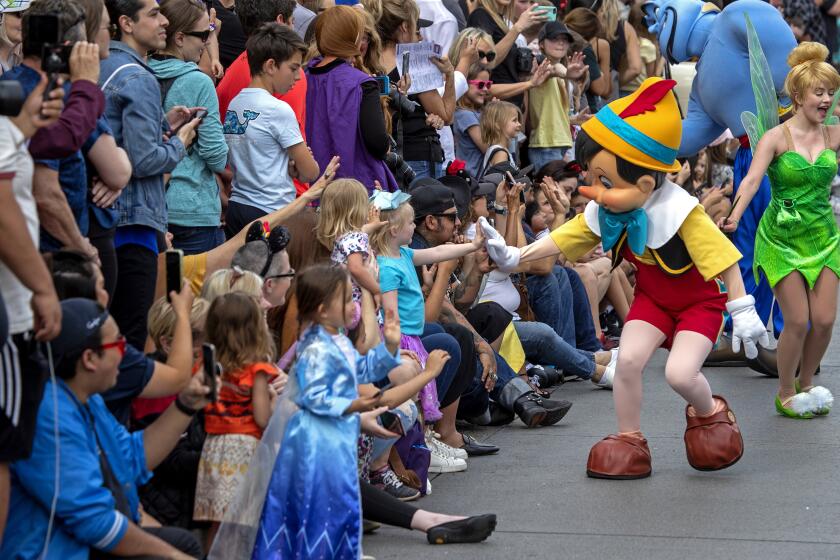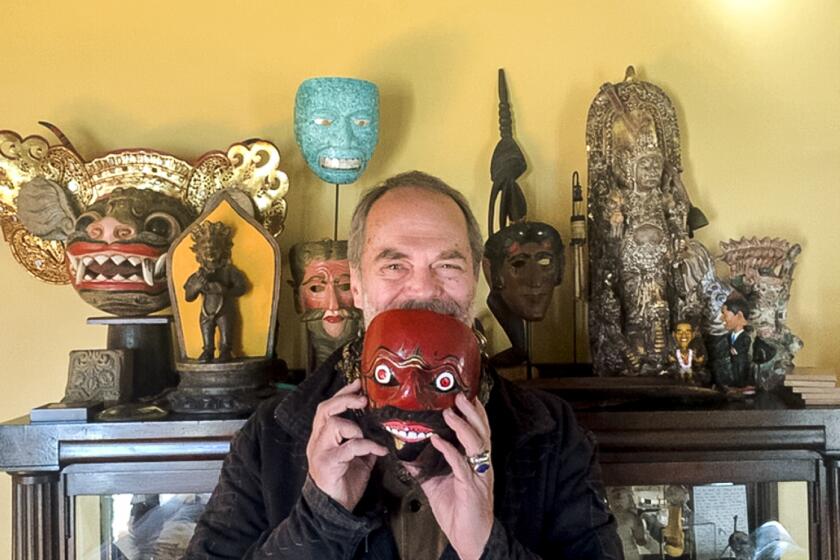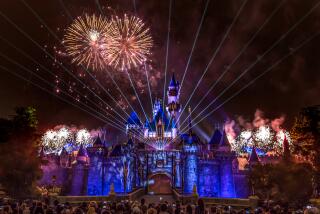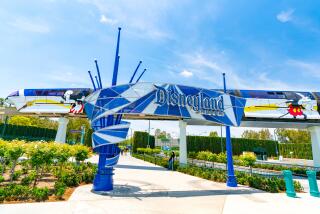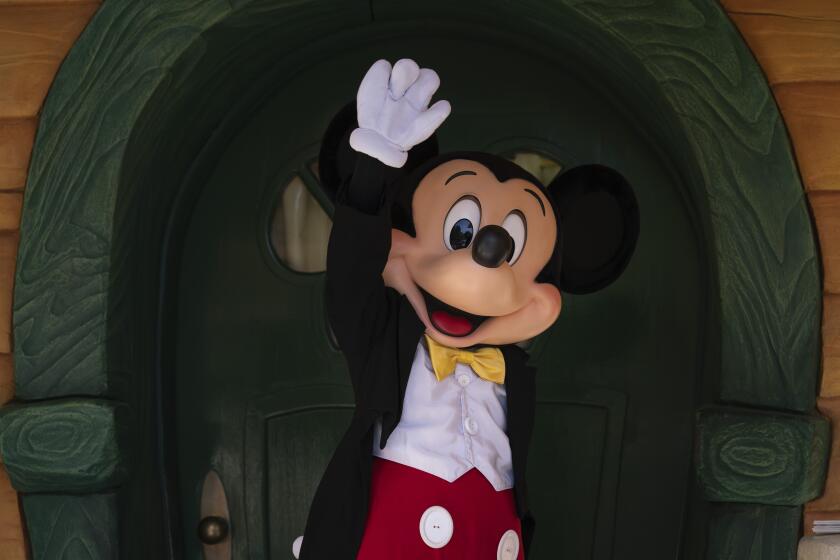Commentary: COVID took away Disneyland’s annual pass program. How to bring it back better
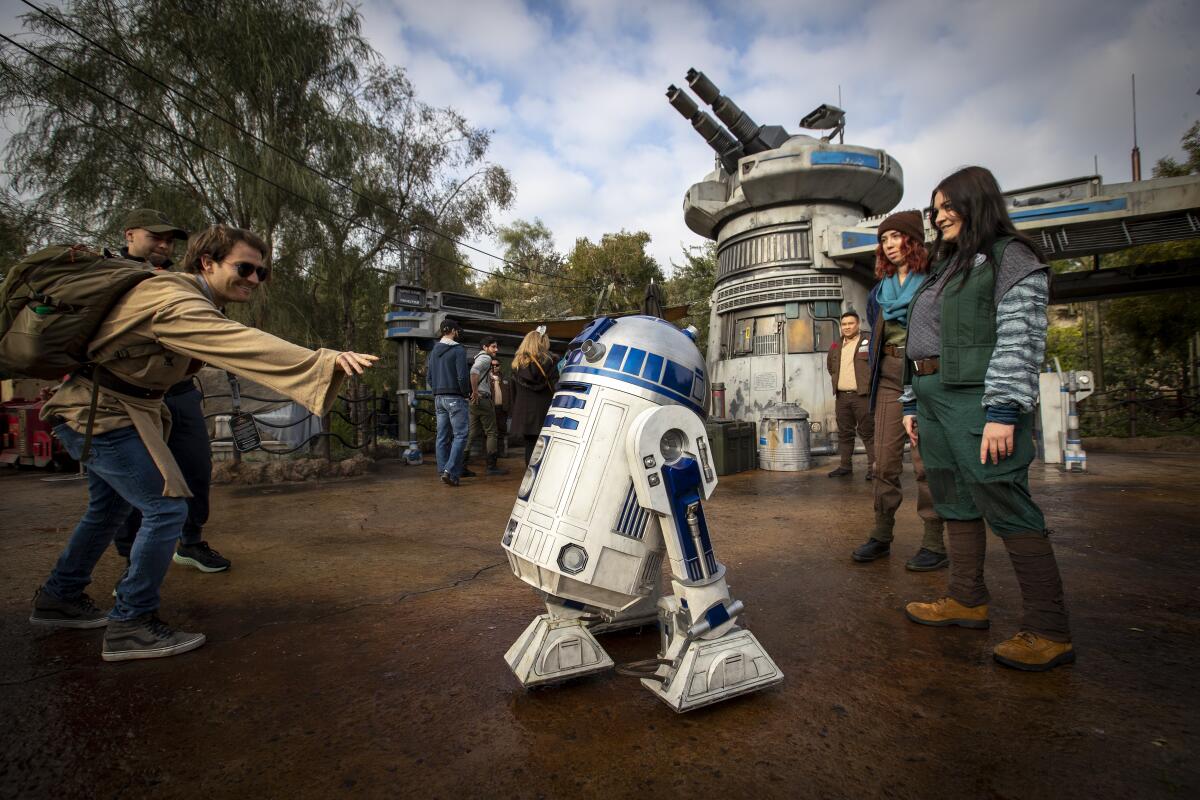
- Share via
Last March, during one of the final times I dined out before the pandemic shutdowns, I threw down my Disneyland annual pass along with my debit card when the bill arrived. It was an instinctual action, one that would ensure I would receive the 15% discount that came with my $1,449 Signature Plus pass.
Except I wasn’t at Disneyland.
The bartender at the downtown Los Angeles restaurant jokingly asked if the Disneyland pass was my idea of an extravagant tip. Little did we know that its value would soon be rendered useless.
The Walt Disney Co. announced last week that it was ending the annual pass program as it currently exists, with a plan to regroup someday with “membership” offerings. It’s a huge shift in Disneyland culture — many Southern Californians grew up with daily, weekly or monthly visits to the park during the nearly four decades the passes have been in existence.
For me, growing up in Chicago, trips to Walt Disney World as a child were an every-other-year luxury. It was a place where the very sight of a monorail among Florida greenery spurred the imagination of a curious kid and allowed a crushingly shy boy to come out of his shell and dream of possibility.
When I moved to Los Angeles, Disneyland, thanks largely to its annual pass program, became a place of community and comfort. Often I’d bring a laptop to Disneyland or California Adventure and work there once or twice per week. As counterintuitive as it sounds, on deadline days I’m still most efficient at Disneyland, a place that allows my mind to relax and reminds me that wonder only belongs to childhood if we let ourselves forget what it means to be playful.
Now, after a year of uncertainty and anxiety about COVID-19, Disneyland fans have a bit more unpredictability, as well as the realization if it wasn’t already clear, that the effects of the pandemic will likely live with us for years to come.
For Disney, ending the annual pass program might be “a blessing in disguise,” a theme park expert says: Now the company can revamp the program to boost profits.
Even without knowing how many passholders exist, it was clear that the program could not go on without modifications. When theme parks get the go-ahead from California to reopen, they will do so with a reservation-only system and heavily reduced capacity. Right now, the only lines on Disneyland property are for COVID vaccines, which offer the hope that we will return to normalcy or near to it. But the timeline depends on supply and distribution as well as adoption by those who are vaccine-hesitant.
Thus, my first reaction when Disneyland axed the annual pass program was relief. Then later, concern.
Relief, because visiting the parks during a pandemic is not on my to-do list, nor did I want to dump money into a pass I wouldn’t use. The little time I spent last year at Downtown Disney and in the shops and eateries of Disney California Adventure’s Buena Vista Street was enough to persuade me to stay away. The experiences felt forced, more stress-inducing than relaxing with my attention hyper-focused on the mask and distancing behavior of other guests rather than my surroundings.
Still, as we’ve seen throughout this pandemic, peoples’ comfort levels vary greatly. If Disneyland opens at 25% capacity — and if estimates that the park has about 1 million passholders are correct — Disney had a mess on its hands. The vast majority of those who paid for access wouldn’t have it and would probably feel entitled that they did.
In 2020, Disney’s California Adventure and Knott’s tried limited reopenings around COVID-19 restrictions. But can we explore and engage in a pandemic?
Halting the so-called “AP” program was the right move. So too is the decision to revamp it.
There has long been growing consensus that the AP program, introduced in the early 1980s, was in need of change. The familiar complaint among a large segment of the Disney fan community is that APs lead to overcrowding, creating a lesser park experience for all. For instance, I learned to avoid the park on Sunday afternoons when many pass tiers were often unblocked and crowding reached claustrophobic levels.
Once, I made the mistake of attending on a Dapper Day when tens of thousands of Disneyland guests dress in vintage cocktail attire; it happened to coincide with a day all passes were unblocked. “Why are you here?” asked a Disney cast member I knew. “Dapper Day, plus no block-out day? This is Disneyland pandemonium!” She wasn’t wrong.
But ways to fix this — to essentially spread local attendance throughout the year so that company and consumer interests align — often result in brute, uncomfortable, classist solutions. Some say Disney should cut the monthly payment program because distributing the cost of a pass throughout 12 months creates the illusion of a lower price and, goes the argument, turns Disneyland into a backyard for those who live near it.
They should not, under any circumstance, do this. Not ever.
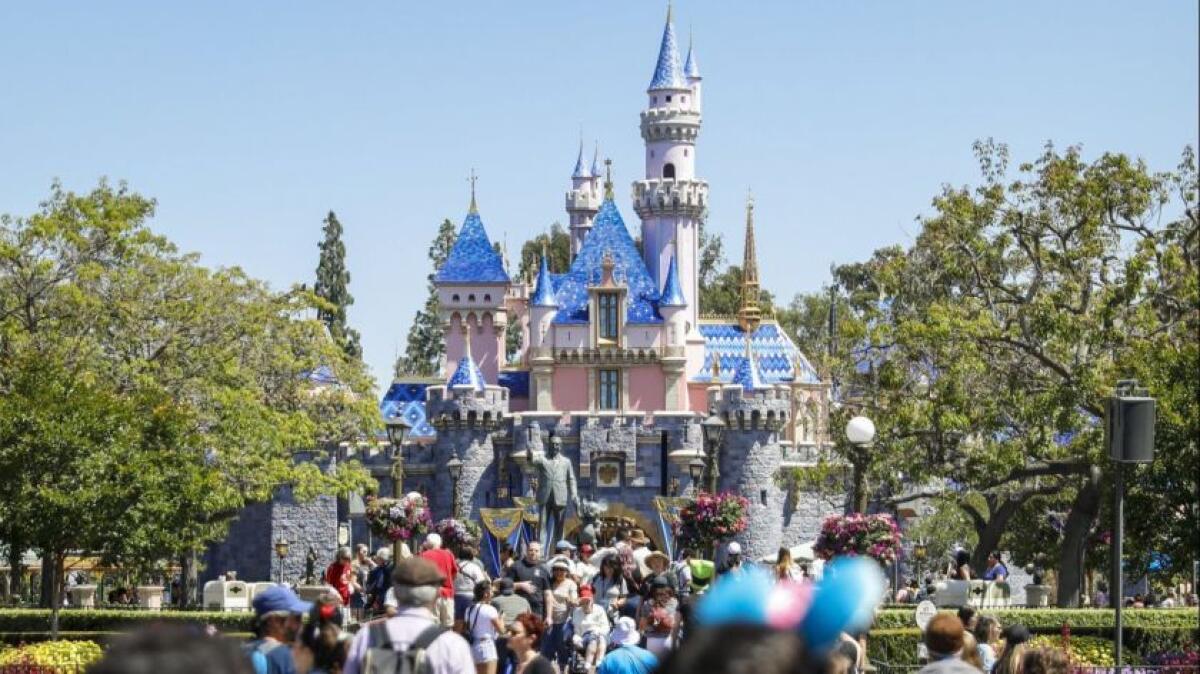
People should not be punished for exploring their passions. It’s also out of step with how we purchase everything from streaming services to smartphone plans and fails to recognize the economic realities of younger generations that can’t afford other possibilities. Many in their late 20s and 30s are still dealing with the after-effects of the Great Recession and now there is a pandemic thrown on top of it.
The success of a theme park also depends on the attendance of all generations. Tickets sold to 20-somethings today are essentially tickets sold to a family in 20 years. Older adults have nothing to feel nostalgic for if they are priced out and don’t go to begin with. Disneyland’s annual pass program was already on this dangerous path, one set entirely on price increases rather than perks. Eliminating monthly payments would turn the parks into a playground for Boomers, Instagram creators and rich folks.
And make no mistake, the AP program is in many ways still vital, especially at an urban locale that doesn’t have Walt Disney World’s hotel capacity or its four theme parks and activities to encourage week-long stays. The annual pass changed my appreciation of theme parks, allowing them at long last to be seen as Disney’s designers intended. No longer was Disneyland a check-list of things to do in an exhausting 10-hour day that’s ultimately little-to-zero fun for anyone.
Joe Rohde spent four decades with Walt Disney Imagineering. In his exit interview, he talks about lessons learned and what future generations need to know.
What’s more, much of Disneyland is reliant on either those taking extended vacations or in their absence, locals who regularly return. All-encompassing lands such as Star Wars: Galaxy’s Edge, which not only has rides but a game on a mobile app that encourages guests to play and engage with the space over time, depend on those who come to hang out rather than hit two rides and bolt.
At Walt Disney World, such activities or even food and wine festivals, can be worked into week-long vacations. In Anaheim, situated in a region with many of the nation’s finest restaurants, art institutions and national parks, such accouterments depend on a robust and accessible program that invites locals to return.
Even the upcoming Avengers Campus is clearly designed with a “local’s park” in mind. The relatively small land is fashioned less as an otherworldly place and more as a SoCal college campus complete with what is more or less a mini beer garden (no offense to the size of Ant-Man and Wasp, for whom the bar is themed).
The conventional wisdom is that hotel guests are more desirable than annual passport holders since over time they spend more money. But that is somewhat outdated blunt marketing thinking — out-of-step with not only what Disneyland represents to SoCal, which will forever be its primary market, but also today’s financially strapped, experience-focused consumers. Increasingly, we’re looking for personalization in our entertainment, changes we’ve seen develop over time amid an own-less, stream-on-demand lifestyle.
Look for guidance at the shift in season ticket programs for sporting events. The Dodgers, for instance, offer a program geared toward those who want limited merch such as bobbleheads as well as one focused on those who want discounts versus those who want more flexibility. This is likely the path forward for Disneyland. The gargantuan Disneyland AP program lacked such personalization, resulting in broadly sweeping tiers based on block-out days rather than specifically tailoring passes to the different ways in which fans engage with the parks.
Even as someone who went 30 to 40 days per year, I started to question the value of a near $1,500 pass that failed to offer the broader sense of connection that I get with my theater and museum memberships, access to events and the ability to regularly meet others who are also passionate about the theme parks. I keep going back to one quote from Disneyland Resort President Ken Potrock in a call with reporters last week, as he was foreshadowing membership programs that are specifically targeted at guest interests rather than calendar dates.
“We want to make sure that we’re creating a program that’s understandable, but at the same time delivers on great value, and that can be things that’s not just clicks at the turnstile,” Potrock said, breaking down “benefits” as things that include “parking or discounts.”
Memberships that come with an assortment of perks — some with merch discounts, some without, some with dining discounts, some without, some with access to after-hours ticketed Halloween events, some without — are easy to imagine. The fear is that Disney goes more of an a la carte route rather than creating robust packages.
Or worse, that the equivalent of the near-daily access of the Signature pass becomes something akin to a poor man’s Club 33, Disneyland’s high-priced private club. Those who have ever been to an “AP-only” lounge at Disneyland know that zero exclusivity is better than exclusivity done cheaply.
But on the surface, programs that offer more control over when people visit — expect a much more robust reservation system rather than lists of block-out days — and can include a couple of the current passholder perks that are most important to certain guests, isn’t a bad idea. Reservations even offer a flexibility that a pure calendar-based system does not and allow Disney to constantly adjust throughout the year, with some memberships based more on spontaneity and some focused more on advanced planning.
The goal should be a park that is full constantly, claustrophobic rarely — if ever — and allows current passholders to find a membership that lines up with their current access and price, with some perks that make it feel a little more tailored to one’s interests. And also, of course, allows everyone to keep making monthly payments.
Will this happen? There’s reason to be skeptical. Disney’s other membership program, its fan club D23, has arguably decreased in value in the last three or four years, becoming little more than home to an upfront payment that grants the right to purchase other things. Unique events have also been dwindling. The focus has seemed to shift to film screenings and talks, whereas it once provided members access to elaborate holiday events at Los Feliz restaurant Tam O’Shanter and even once hosted events at Club 33.
But I’m going to be optimistic and assume Disney views its annual passholders as its most loyal and important guests. So, who do I talk to about getting better wi-fi in Cars Land for my remote work station?
More to Read
The biggest entertainment stories
Get our big stories about Hollywood, film, television, music, arts, culture and more right in your inbox as soon as they publish.
You may occasionally receive promotional content from the Los Angeles Times.
